Archive for Irrigation
The Basics of Good Commercial Landscaping
Everyone knows that a well-designed and well-maintained landscape adds great curb appeal and value to a home. The same holds true for commercial landscaping. From lush green expanses to eco-friendly alternatives featuring boulders and native species, a beautiful landscape makes a commercial property more inviting to customers and employees alike.
The Value of Commercial Landscaping

If you use a professional landscaping service for your Rohnert Park home, you know that it involves much more than basic mowing and trimming. That’s doubly true for commercial landscaping services.
Both types of services offer similar benefits: to enhance a property’s comfort, functionality, and value through the use of walkways, trees, shrubs, and green lawns, whether natural grass or high-quality artificial turf. Some commercial property owners go even further, adding perennial gardens, water features, and energy efficient lighting systems.
The options are limitless, but the results are the same. Employees and clients get to enjoy a beautiful environment while your business presents its best face to the world. Other, non-aesthetic benefits to commercial landscaping include:
- Increase in property value
- Reduced water and electricity costs
- Mitigating property damage caused by erosion
Any type of business can reap the rewards of a good commercial landscaping project. Offices, retail stores, health facilities, restaurants, home associations, and industrial complexes are just a few. Going above and beyond traditional commercial landscaping lets people know you take pride in your business and value their joy and comfort.
Commercial Landscaping Basics
Good commercial landscaping should be both easy to maintain while seamlessly complementing the design and style of your property. Here’s how to get it right.
- Define your message. Even if you don’t think of it this way, your business and building have a brand to project. What do you want people to feel when they enter your business? Whether it’ professional, healing, fun, or edgy, you can use landscaping to deliver that message. For example, dancing fountains and brightly colored flowers project a light-hearted approach while green roofs say you care about sustainability.
- Find a purpose. Landscaping can both encourage people to linger or keep them on the move. How? Benches, tables, and low seating walls invite people to stop and enjoy their surroundings. A more straightforward design that uses direct pathways, low shrubs, and strategic lighting make a beautiful statement, too, but urge people to move to the entrance.
- Complement the architecture. Both soft and hard landscaping features should be chosen to highlight your building’s best features. For instance, older, more classic structures may look best with wood or brick elements. Modern buildings might be better accented with metal and concrete elements. Of course, there are no hard and fast rules here. What’s important is to create a cohesive look that people find attractive.
- Think environmentally. Commercial landscaping has come a long way in embracing the concept of water and energy conservation. Shade trees help keep interiors cool in the summer and block chilly winds in cooler weather. Green roofs help reduce heating and cooling costs while helping to control water run-off.
It’s also important to think about how much ongoing maintenance will be required to keep your landscaping looking great. An experienced commercial landscaping professional can advise you about which plants and other outdoor features can provide the benefits you desire while keeping maintenance costs within budget.
How to Choose a Commercial Landscape Company
Depending on your needs, commercial landscaping can include design and planning services as well as installation and long-term maintenance. Design services include consultation, site survey, and conceptual drawings. A typical design includes:
- Plantings
- Irrigation
- Hardscaping
- Lighting
- Ornamental features
During the design phase, a good designer will advise you of any erosion or drainage issues and help you choose plantings and other features that make the most sense for your goals and budget. These three questions should help you choose the right landscaping professional for your project:
- Do the services offered match your goals? Different landscapers offer different specialized services such as xeriscaping, the practice of landscaping that requires little or no irrigation. A full-service commercial landscaping company offers design, irrigation, enhancement, maintenance, and lighting services.
- Do you value environmentally sustainable practices? Make sure the landscaper does, too. Ask if they encourage the planting of native species, where they get their plants and landscaping materials, if they use water-conservation techniques, if they recycle and/or repurpose landscaping materials, and if the lighting systems they install are energy efficient.
- Do they have all the right qualifications? Be sure to check both the company’s website and independent review sites. Ask for references from former and current customers. Confirm they are licensed to perform commercial landscaping in your area and ask about any industry certifications and/or qualifications they have. Ask, too, if they perform all their own work or if they subcontract it out.
It’s also important to talk about what maintenance services a company offers. Though ongoing maintenance plans vary from business to business, the basics generally include:
- Regular mowing, weeding, and pruning
- Seasonal plantings
- Mulch application
- Fertilization
- Integrated pest management
Some companies also offer tree removal. Whatever your specific needs, the landscaping company you choose should be willing to come up with a maintenance routine that’s tailored to your property’s needs and your budget.
Time to Plan for Your Commercial Landscaping Project?
Investing in professional landscaping for your business gives you the peace of mind you need in knowing you’ve chosen the right plantings and other landscape features to create the atmosphere and environment you want for your property. Choosing a landscaping company with a broad range of services helps you save time and money and allows you to work with one company to complete the job. This ensures the result is a cohesive, functional design.
With the help of DK Landscaping, the design, installation, and maintenance of your commercial landscaping project will meet all your expectations. To learn more and to schedule a consultation, contact us today.
How To Find A Good Landscaper in Rohnert Park
As per the survey conducted by the National Association of Landscape Professionals, 67% of Americans agree that professional landscaping allows them to have beautiful yards. You, too, want an inviting yard and outdoor space. However, the challenge is finding the right landscaper. In this article, you will find out how to find a good landscaper Rohnert Park.
Identify what you want

There are different types of landscapers. Each specializes in different things. Some specialize in lawn installation and maintenance. Others, solely do gardening. While others offer full-range services, including landscape design.
After identifying what you want, you can know what type of landscaper to look for.
Research local landscapers
First, go to Google and search for landscaper Rohnert Park. You want to find landscapers that provide their services in your area.
Make a list of landscapers you could potentially hire. Then compare them. Compare services offered, price, and reputation.
Reputation is vital as you want to hire a company that provides quality services. So, look for reviews of the company on sites such as Yelp, BBB (Better Business Bureau), and Angie’s List. Also, check the landscaper’s website for testimonials or ask them for referrals.
Request quotes
At this point, you have identified a few (2 to 3) landscapers you consider best suited to handle your project. Go ahead and ask for quotes. Most landscapers will prefer to come and see the scope of the project before they can provide an estimate.
This one-on-one meeting is an opportunity to vet them further. As much as the budget is essential, it should not be your sole focus. Ask about:
- Insurance: you do not want to be liable to injuries to the people working in your property.
- Completion timetable: Landscapers often have multiple clients, and a company might delay your work as they are already engaged in several other projects.
- Guarantees: A good landscaping company will offer at least a 2-year guarantee on their work.
- How they will handle your project: By asking this question, you get to gauge how experienced and knowledgeable a contractor is.
Consider their personality traits
You don’t just need a landscaper with the right skills and qualifications. You need one that will understand what you need and work with you to make your dream yard come true. So, as you talk to them, look for the following personality traits:
- Excellent communication: You want a contractor that explains the processes and work involved clearly.
- Patience: A patient contractor will not only listen and but also understand your needs.
- Willingness to work with your ideas
- Creativity: so that they can improve your ideas
Do you need a landscaper Rohnert Park? Contact us today. We specialize in landscape repair and maintenance and irrigation. We are also specialists in xeriscape or water-saving landscape design.
Lawn Maintenance: The Importance of Lawn Treatments
If you love your lawn (which we are sure you do), then you know the importance of lawn care and that it goes beyond watering and mowing. Yes, these two are the foundation for a healthy lawn, but lawn maintenance is a complex science, involving feeding, aeration, and controlling insects and weeds.
Benefits of Lawn Treatment
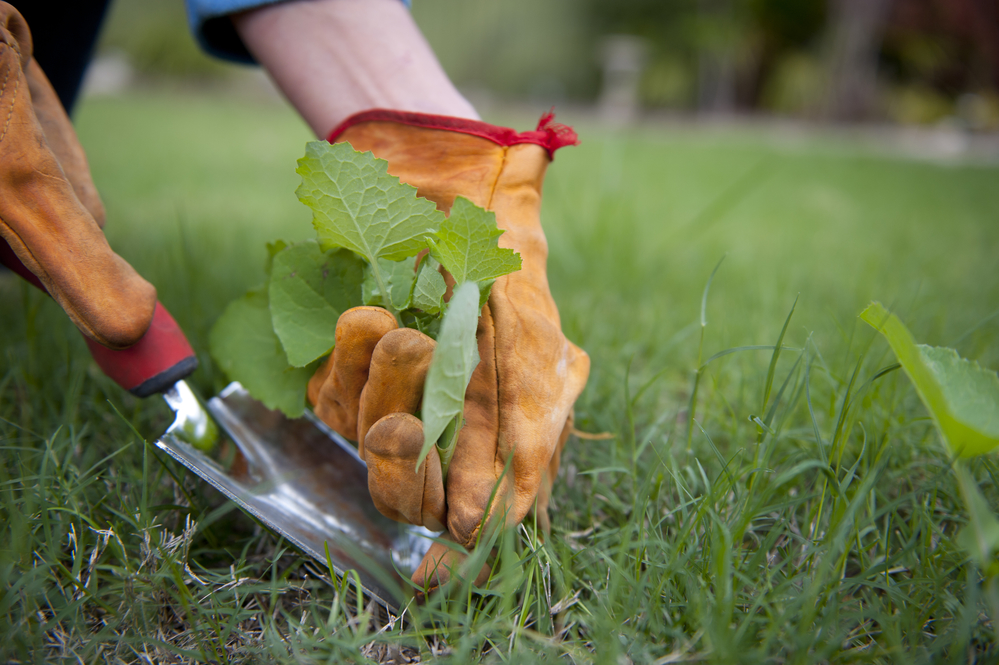
Proper lawn care ensures that your lawn can withstand threats from lawn-damaging weeds and insects. It also ascertains that your flowers, grass, and shrubs can fight-off diseases. Furthermore, lawn care ensures your turf can survive unpredictable weather and guarantees your lawn is ever nutrient rich.
However, seeing as it is time-consuming and a difficult undertaking, we recommend you engage professionals. Here are five benefits of hiring experts.
- Expertise
You might be a proficient landscaper, but there is knowledge and services only professionals can provide. They understand the shrubs and trees better and know the different grass varieties. They can often tell what is ailing your greenery in an instant and prescribe the best treatment program. Moreover, seeing as they understand the local climate, and have years of experience, they will engage in preventive measures to ensure your lawn can ward off seasonal pests and diseases.
- Avoid Accidental Damage
64% of American believe that all grass should be fertilized during spring while another 57% believe a lawn is not healthy if it is not green. These are false believes that lead to damage by over-fertilizing and leading to a high accumulation of salts in the soil.
Lawn treatment services, on the other hand, avoid common mistakes know how to treat your plants.
- Cost Effective
It might sound counterintuitive, but engaging professionals is cost-effective. Think about it; you will have to invest in equipment such as mowers, aerators, and brush cutters, invest in chemicals, and fertilizers. Furthermore, given that there is a period of trial and error, there is a high likelihood that you will be paying to correct mistakes.
However, with professionals, you will not pay to correct mistakes, and you don’t have to invest in the equipment and chemicals.
- Property Value
If you are considering putting your house on the market, you can increase its value by proper lawn treatment. Lawn maintenance can increase the value of your property by up to 15%. Who wouldn’t like that?
Hiring lawn care experts is the only indisputable way to ensure that your lawn is always in pristine condition.
- Consistency
As a homeowner, there is a likelihood that work, plus maintaining your lawn can be overwhelming. It will be challenging to create let alone observe an effective lawn care routine.
However, lawn maintenance experts ensure that your greenery, is trimmed, fed, and watered consistently. They also handle far more, and the result is a healthy lawn, and one that you can enjoy.
Conclusion
Though it is a demanding task, lawn treatment is of utmost importance. It improves air quality while maintaining the aesthetics of your home. Engaging the services of a professional ensures that your lawn is ever impeccable, it saves you money, and keeps you from physical labor. You can contact us for all your lawn maintenance, repair, and landscape design needs.
Improve the Appeal with these Simple Lawn Treatment Tips
Every homeowner dreams of a perfect lawn. Unfortunately, only a few yards in residential areas are green, lush and healthy. This can be attributed to the lack of adequate care. In simple terms, if you do not put some time and effort into protecting, preserving and enriching your lawn, you will not get beautiful and thriving turf. Under ideal circumstances, you should engage a professional for yard maintenance. If you are set on DIY upkeep, use these simple lawn treatment tips for better results.
Check Your Mower Settings

If your grass is growing healthily but the effect after mowing is not stunning, it is advisable to consider the lawn mower settings. Setting the blades to cut the grass to short can be highly detrimental to the beauty of the yard. You should note that different species of grass have optimal cutting heights. Consult your landscaping expert on the best length for your grass. Otherwise, you will have to deal with bald patches, poor root systems and even drying plants. When mowing, ensure that the mower blades are sharp, and alternate the cutting patterns for long-term lawn appeal.
Water at the Right Time
Watering your grass is an essential practice for a healthy lawn. Unfortunately, irrigating the plants at the wrong time can cause unexpected harm. For instance, if you water the grass in the evening, the moisture will remain on the blades for a prolonged period. This can promote the growth of harmful fungi on your property. On the other hand, watering when the sun is blazing prevents optimal absorption due to evaporation. Therefore, you should irrigate during early mornings for maximum absorption without the moisture overload.
Rake the Fallen Leaves
Raking the lawn is not fun for most people. However, if you want to keep your yard and grass in the best condition, this practice is necessary. When dead leaves are left on the lawn for too long, they will suffocate the grass and prevent the penetration of sunlight. Consequently, the grass will no longer have the lush green look. In addition, leaves promote moisture retention, and this will increase the risk of fungi attack. So, plan for the timely removal of dead leaves to protect your lawn.
Deal with Bald Spots
Bald spots can develop on the lawn due to unexpected problems. For instance, if you have not upheld the best mowing practices, some areas of the yard will look a little bare. Also, poor soil aeration and smothering of grass by objects can cause bald patches. It is important to deal with these spots to restore the beauty of the lawn. The most convenient method for dealing with bald patches is filling in with a repair mixture. Typically, the repair material consists of suitable grass seeds, special fertilizer and in most cases, some organic mulch.
Finally, you should preserve the beauty of your lawn by controlling weeds. These unwanted plants will take away the nutrients intended for your plants. As a result, the grass will not grow healthier over time. Also, weeds are unappealing and will compromise the harmony of the turf. Therefore, you should plan for immediate weed removal if you notice any signs of invasion. Contact us for more information.
Four Creative Flower Bed Ideas to Get You Going
Creating sensuous textures and adding color to your garden with a flower bed is one of the quickest ways to improve your yard. And when it comes to flower bed ideas, there’s virtually no limit.
Raised flower beds are getting a lot of attention lately because they’re easier to water and maintain, but that’s far from the only option.
Other options are flower beds that encase trees and create a truly picturesque effect, flower beds that line a walkway to a backyard oasis, and tall flower beds filled with azaleas and wisterias.
Flower Beds Encasing Trees
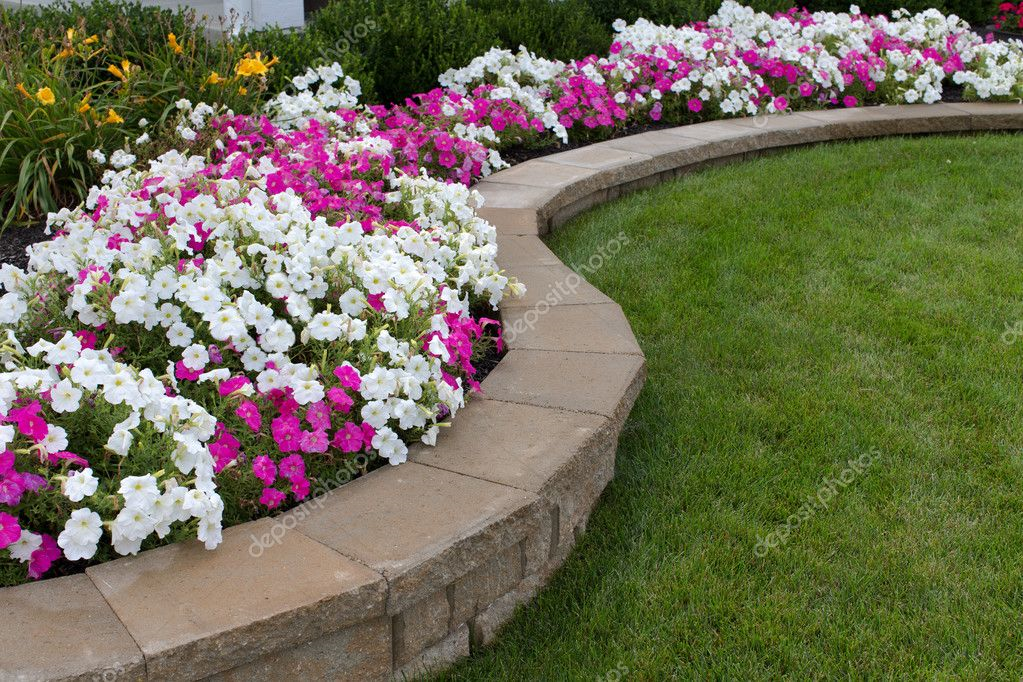
The thing to do when planting flower beds around trees is make sure that you’re selecting the right flowers for your particular region and getting the amount of sunlight versus shading right.
Plants and flowers that are “full sun” are the easiest to work with since they can receive six hours or more of sunshine per day and still be fine.
Yarrow, tickseed, and blanket flowers are all full sun plants that go great around trees. Lavender (purple) and sasha sage (white) pair well together and are both full sun plants. These might well give you the effect you’re looking for.
Circular Flower Beds
If you’re feeling a bit more adventurous, then you might want to consider a few of the flower bed ideas below (including this one!).
Circular flower beds are good if you have a huge tree that you want to draw attention to or a bare spot in your yard that needs a bit more color.
Taking an eclectic approach that gives you a wide palette of color is usually the way to go when it comes to creating a successful circular flower bed.
Bulbs, annuals, and perennials with a nice border flower like garanium can really frame things nicely. Putting something like a bird bath in the center is also an option.
Like these flower bed ideas but feeling overwhelmed with actually pulling them off? Get in touch with a landscaping company that can help you design, build, and maintain your flower bed for years to come.
Flower Beds Along a Walkway
As far as flower bed ideas go, this one’s right up there in popularity with raised flower beds and flower beds around trees.
Flower beds lining your walkway can significantly increase your curb appeal as a homeowner and work well with condos and receptions as well.
In terms of design, planting decorative flowers as a border along your walkway is said to soften the sameness and artificiality of concrete.
A line of flowers adds an unexpected splash of color in an unlikely, though not unwelcome, place.
Landscaping and design experts say to go with flowers that are hardy yet vibrant like mahogany bugleweed (purple) or red ruby.
A landscaping company can plan, edge, and till around your walkway to get things started on the right foot. Composting, mounding the soil, and actually planting the flowers comes next.
Here too landscapers can provide regular maintenance and put your flower bed and lawn on the irrigation and aeration schedule that both need to flourish and bring your outdoor landscape into full color.
Slanted Flower Beds
Slanted flower beds are one of those creative flower bed ideas that’s certainly not right for everyone but could be perfect for many people.
If your front yard is pitched, for instance, a landscaping team can help you raise your dirt bed to level and create a retaining wall that maximizes your flowers’ blooms while minimizing soil compaction.
Grasses and succulents are smart choices for sloped gardens. Contact a professional landscaper to make it happen!
There’s More to Landscape Maintenance Than You Might Think
Landscape maintenance is all about keeping your yard and garden attractive, safe, and healthy. That means keeping the bugs, insects, and other pests away and making sure that everything is cut and trimmed to keep your home or business landscape looking wonderful.
Getting on a regular landscape maintenance schedule might even be a good idea since it means less time spent pruning and weeding and more time spent with your family.
Professional landscapers can also handle the hard stuff like topsoil enrichment and making sure your lawn is on the right irrigation schedule.
Landscape Maintenance: Where Art and Science Meet
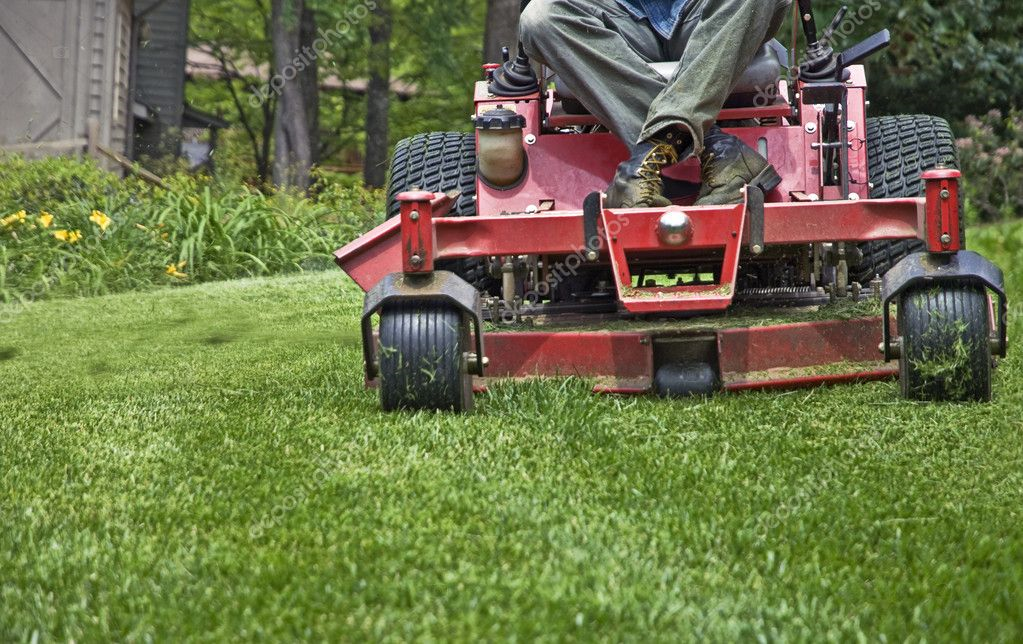
Professional landscaping is as much an art as a science. There’s a real science to, for instance, getting the pH balance of your lawn just right for growing plants, shrubs and flowers.
(Most grass likes a pH of about 7, though some warm-season grasses like more acidic soil with a pH of around 5. Don’t worry: The pros can tell you what’s right for your lawn!).
Now, one of the more scientific aspects of lawn maintenance is lawn aeration where your soil is perforated to allow in more water and the kinds of nutrients that your soil needs to perform at its best.
These tiny holes that are made when you have your lawn aerated also help get more air into the soil and help you avoid soil compaction. (That’s something you don’t want at all since soil compaction can negatively affect nutrient absorption and root growth.)
There’s as much art to landscape maintenance, though, since landscapers have to balance the layout, lighting, walkway access, and fencing of your yard with choosing and maintaining just the right bushes and mulch for your particular landscape.
Choosing the right kind of mulch – whether that’s straw, chips, stone, or bark – is important for making your garden and overall landscape look fantastic.
Mulching can also help prevent your garden from being ensnared by a bunch of weeds and ensure that soil compaction doesn’t become an issue for your lawn and garden.
The right kind of mulch can frame your landscape beautifully, promote nutrient absorption, and limit water use since more moisture gets to the roots.
Who Can Benefit from Regular Landscape Maintenance?
Because landscape maintenance covers so much ground almost any homeowner or business can reap the benefits. Condos, gated communities, shopping centers, community centers, banks, universities. You name it.
Any business that has a landscape that they want to protect and any homeowner that wants to improve their curb appeal should seriously consider getting on a regular landscape schedule.
So, do you currently need to be experiencing lawn issues to hire a landscaper? Not necessarily, but landscape maintenance includes things like fertilizing and spot treatments to address those pesky bald spots on your lawn.
Uprooting weeds is another thing that most homeowners don’t exactly look forward to doing but that can have a big payoff when it comes to keeping your lawn healthy and beautiful.
When you get on a regular landscape maintenance schedule you can have weeding, aeration, mowing and mulching taken care of.
Knowing that you’re doing the most to improve the curb appeal of your home or the attractiveness of your business property lends a huge amount of confidence that’s sure to spill over.
A professional landscaping company will even provide monthly irrigation inspections to ensure your yard, garden, shrubs, and bushes are getting the nourishment they need. You can also have your lawn pH tested to take the guesswork out of it.
Contact us to discover all of the amazing benefits of getting on a regular landscape maintenance schedule.
Frequently Asked Questions About Drip Irrigation Systems
“The Secret Of Landscapes Isn’t Creation …It’s Maintenance.”-Michael Dolan
Micro- irrigation systems or drip irrigation as it’s more commonly referred, is basically a form of irrigation that supplies water toplant roots in a gradual manner. Extremely popular for its efficiency and its ability to promote water conservation, drip irrigation systems consist of a network of supply veins which run beneath the topsoil throughout the specified area, to thoroughly and strategically deliver a constant supply of water to plants.
They’re probably plenty of gardeners out there who find drip irrigation systems work well for their gardens but might not necessarily know everything they should about irrigation systems.
Unfortunately, because of this they may run into a couple problems that they may not be able to solve, so this article aims to answer any questions relating to irrigation systems that may prove difficult to answer.
Understanding Drip Irrigation Systems – Frequently Asked Questions & Answers
Q: How do you know if irrigation drip lines are working?
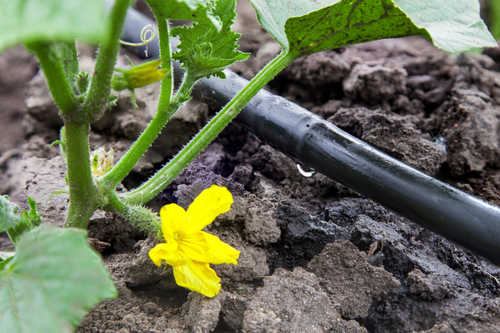
A: Since drip irrigation systems run beneath the topsoil it can be difficult to determine if it’s working. So, by simply observing the area after a few minutes of turning on the system to look for dampness in the soil around the line.
If your soil is mulched, just dig away a small portion of the mulch and soil with your hand and feel the soil to see if it’s moist or not.
Q: What’s the difference between a drip irrigation system and a ground sprinkler system?
A: Both systems function to deliver water to plants however a ground sprinkler system works by spraying a planted area above ground while a drip irrigation systems are located underneath the soil and deliver water directly to roots with a slow, consistent, drip.
Q: What type of garden is drip irrigation best suited for?
A: Drip irrigation systems are best suited for landscape beds with lots of plants and shrubs rather than lawns.
Q: How can a drip irrigation system benefit my garden?
A: Drip irrigation can offer gardens quite a few benefits once installed correctly. For instance, they prevent overwatering of plants and allow plant roots to absorb more water over a longer period of time, however some of the more popular benefits include its ability to promote water conservation, especially in drought-stricken areas and they offer a way for gardeners to save time and money.
Q: What difference will having a drip irrigation system make on my water bill?
A: As you can tell from its name a drip irrigation system practically drips water and emits water at a slower rate than above ground sprinklers or garden hoses.
With various settings, drip emitters may apply water at 0.5 – 4 gallons per hour where a rotor style sprinkler can water between 1 – 6 gallons per minute. See the difference yet?
You see, even though each landscape area differs in size drip irrigation systems can be set so that they have a slower application rate and higher efficiency. Based on this efficiency gardeners are able to reduce water usage by 50%. So, in other words, you’ll be cutting your water bill in half.
Q: Is a drip irrigation system difficult to install?
A: With easy to work with components, the process of installing a drip irrigation system is not difficult though there are certain guidelines you should follow. Basically, the process consists of weaving and arranging the tubing so that the supply of water is directed to the targeted areas.
Need Help With Drip Irrigation Systems?
If you don’t know how instal a drip irrigation system, don’t panic – help is just a call or click away. Don’t exhaust yourself spending hours in the sun struggling with irrigation tubes or worse stand in your garden and not know what to to to install your drip irrigation system. We can help.
Contact us at DK Landscaping Inc., to come in and assist you with professional irrigation system installation. Not only is our team knowledgeable about each aspect of irrigation installation but they will ensure you are well on your way without having to break a sweat. Call us today at (707) 280-3632 to schedule a visit or you can visit our website dklandscaping.com to learn more.
Effective Gardening Tips Part 2 – Which Type of Irrigation is Best
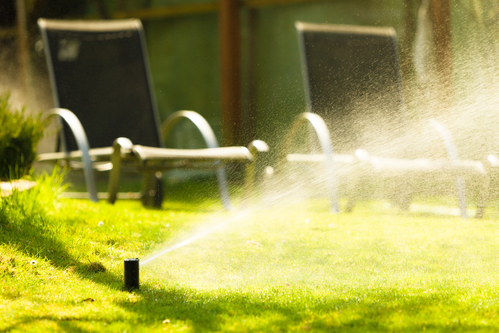 If you are a gardener, farmer or even a landscaper you understand the necessity of supplying your plants, gardens or crops with adequate water. Normally most gardeners use hoses or watering cans to water gardens but this is not always as effective because sometimes enough water might not penetrate the soil. In addition it might not be sufficient to supply what plants really require. An effective way to tackle issues such as this is to install an irrigation system which will properly supply gardens or crops with an adequate and timely supply of water.
If you are a gardener, farmer or even a landscaper you understand the necessity of supplying your plants, gardens or crops with adequate water. Normally most gardeners use hoses or watering cans to water gardens but this is not always as effective because sometimes enough water might not penetrate the soil. In addition it might not be sufficient to supply what plants really require. An effective way to tackle issues such as this is to install an irrigation system which will properly supply gardens or crops with an adequate and timely supply of water.
Different Types
The basic concept of an irrigation system mainly entails water being obtained from a source and distributed in specific amounts equally and uniformly to each plant or crop. Different kinds used include high or micro flow irrigation, sub-irrigation, in-ground irrigation, localized irrigation and even automatic irrigation systems.
The systems mentioned are all utilized to best suit their specific purpose however the two most commonly used are the high flow and low flow irrigation systems. The first system delivers water to plants with a high flow while the latter operates with a low flow or drip.
Use A System That Best Suits Your Garden
If you are a farmer cultivating crops on agricultural land then the high flowing system would be more appropriate. With this type high water levels are used to flood and control the amount of water in each distinct field. It is also regulated by a series of slopes that enables a runoff of excess water.
With the low flowing or drip irrigation system water is transported and distributed to plants through emitters, mini rotors, micro sprays or drip lines in a dripping fashion delivering water directly to roots. Seen as a very efficient method, low flow irrigation utilizes less water and significantly reduces evaporation and runoff.
Over time methods have improved to better manage the different types of gardening done today so depending on the type of gardening that you practice, installing the type that is appropriate is the best way to ensure that plants or crops receive the water that they require.
We’re Here To Help!
If you are interested in installing an irrigation system in your garden but you don’t know what to do leave it to us we can come and install it for you. Here at Dk Landscaping Inc. we aim to provide the highest quality landscape and gardening services to clients. Our services are very affordable and we work with clients to manage any type of gardening environment give us a call at 707 217-6508 or contact us via email.
How To Winterize Your Drip Irrigation System
Leaving a drip irrigation system in its natural state during the winter is a mistake. Be proactive and winterize your drip irrigation system with the methods outlined below. These winterization methods will safeguard your drip irrigation system, protecting your investment as well as your property. If you fail to properly winterize your drip irrigation system, the system’s valves, plastic fittings, poly pipe, filters, PVC pipe or layflat hoses might burst as a result of water freezing inside. Even the main water lines can be damaged if you fail to winterize. It will take an hour or less to winterize your system. Here is how to do it.
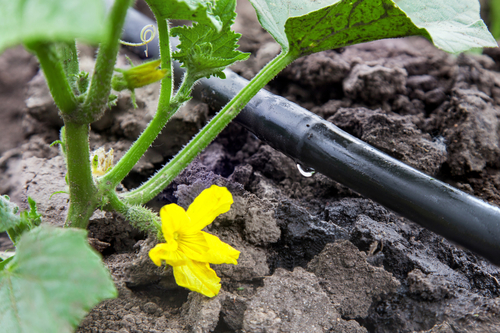
A Helpful Preventative Measure for Drip Irrigation Systems
One of the best ways to prevent freezing in your drip irrigation system is to install automatic drain valves. Position them at the lowest possible point within the system. Drain valves allow water within the line to drain out. Some experts also recommend running chlorine (2 PPM) into the system and flushing it out thoroughly for a comprehensive clean ahead of the winter.
The First Step
Begin by turning off the main water supply to the drip irrigation system. Do this the day before freezing weather arrives. Make sure that there is no water in the backflow device, filter, valves, drip hose, sprinklers, pipe and pressure regulator. Run the controller/timer through its regular watering cycle. This allows each valve to open. Water pressure is relieved from the valves as well as the main line. Let the lines drain.
If the spring-loaded drain valves toward the system’s end are not properly installed, the main line might not fully drain. In some instances, the ground is not completely flat or the drain valve is positioned toward the bottom of the system. If you have any doubt as to whether the main line is drained, make use of air pressure to fully flush out the system.
Drip Tubing/Micro Tubing
Start out by disconnecting the drip tubing with the filter assembly’s swivel adapter. Wrap this piece to the filter assembly so grime doesn’t reach the drip tubing. If your drip tubing is above ground, open each end to permit the draining of water. Lift the hose a couple feet at a time so water can drain out. Once the water drains, close the drip tubing ends.
Irrigation Valve Assemblies
If your system makes use of AC valves with a pressure regulator and filter or battery operated controllers, consider storing them inside a warm area during the cold months of the year. If you can easily remove the full assembly from the pipe, you can store this assembly unit all the way from the pressure regulator to the controller indoors for the winter. If separating the valve assembly or filter assembly is not feasible, loosen or remove the valve bonnet to ensure the water from the upper portion of the diaphragm and filter cap can drain.
How to Proceed Through the Duration of the Winter
Leave the system in the “off” position and fully drained throughout the duration of the winter. If you decide to water your plants, yard or other items on your property, use your hose. In most instances, there is ample moisture within the ground to sustain your greenery until spring.
We’re Here to Help With Everything Irrigation-Related
If you have any questions about how to winterize your drip irrigation system, reach out to our landscape maintenance company. We specialize in irrigation and water saving landscape design. Put your faith in our irrigation experts and we will improve the beauty, integrity and utility of your property. Contact us the experts for more information.
Different Kinds of Irrigation Systems
If you are a farmer, gardener or even a landscaper you probably know how important it is to have an irrigation system installed to supply your plants, gardens or crops with water. Most irrigation systems are used during dry seasons when rainfall is scarce but since there are several types of irrigation it would be important for persons to identify which type would best serve their needs.
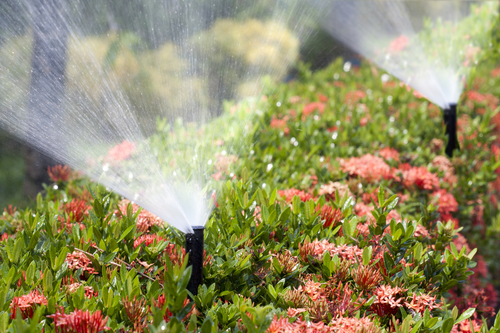
Lets Look At irrigation Systems
Irrigation techniques may differ in several ways but the basic concept of the system is that water is obtained from a source and is distributed to plants or crops. Generally the aim of the system is to equally and uniformly distribute specific amounts of water to each plant or crop.
Types of irrigation used include high or micro flow irrigation, sub-irrigation, in-ground irrigation, localized irrigation and even automatic irrigation systems. They are all utilized to best suit their specific purpose however the two, most, commonly, used systems are the high flow or micro flow irrigation systems.
With these two main types of irrigation systems one releases water with a high flow and the other distributes water with a low flow or a drip. The high flowing system operates so that water spreads heavily across the surface of the specified area, in order to wet and infiltrate into the soil and the low flowing system functions so that water falls in a dripping fashion and is delivered directly at the position of roots.
The high flowing system is mostly used when irrigating agricultural land. Here water levels that originate from the irrigation source and are used to flood or control the level of water in each distinct field. The flooding system is controlled by dikes which are slopes that help to regulate water levels. This form of irrigation is mostly seen with the cultivation of rice.
The low flowing or drip irrigation system as we know obtains water from a source and transports and delivers it to plants through emitters, mini rotors, micro sprays or drip lines in a dripping fashion where water goes directly to roots.This method has been seen as the most, water-efficient, method, of irrigation as it utilizes less water and once managed properly minimizes evaporation and runoff.
Since drip irrigation systems are the more domestic and commonly used system here are a few tips that can assist persons with operating and maintaining them so that they function as efficiently as possible.
For this type drip lines are most recommended and should be used for continuous rooting as they have flexible tubing containing tiny, water, flow, regulators, for evenly spaced water distribution.
Micro sprays and mini rotors clog easily, and should be regularly maintained. Monthly investigations should be conducted and if necessary repairs or replacements done to ensure there are no irregularities within the system.
Laying out emitters individually can also prove to be an efficient practice as this delivers water exactly where the plant needs. It reduces the amount of weeds produced and eliminates excess, irrelevant water. Persons also need to make sure that their drip system includes pressure reducers and filters as these ensure water is measured accurately and delivered at the specified rate.
Remember that these systems must be designed to prevent runoff, low head drainage and overspray. For more information on irrigation contact us.





